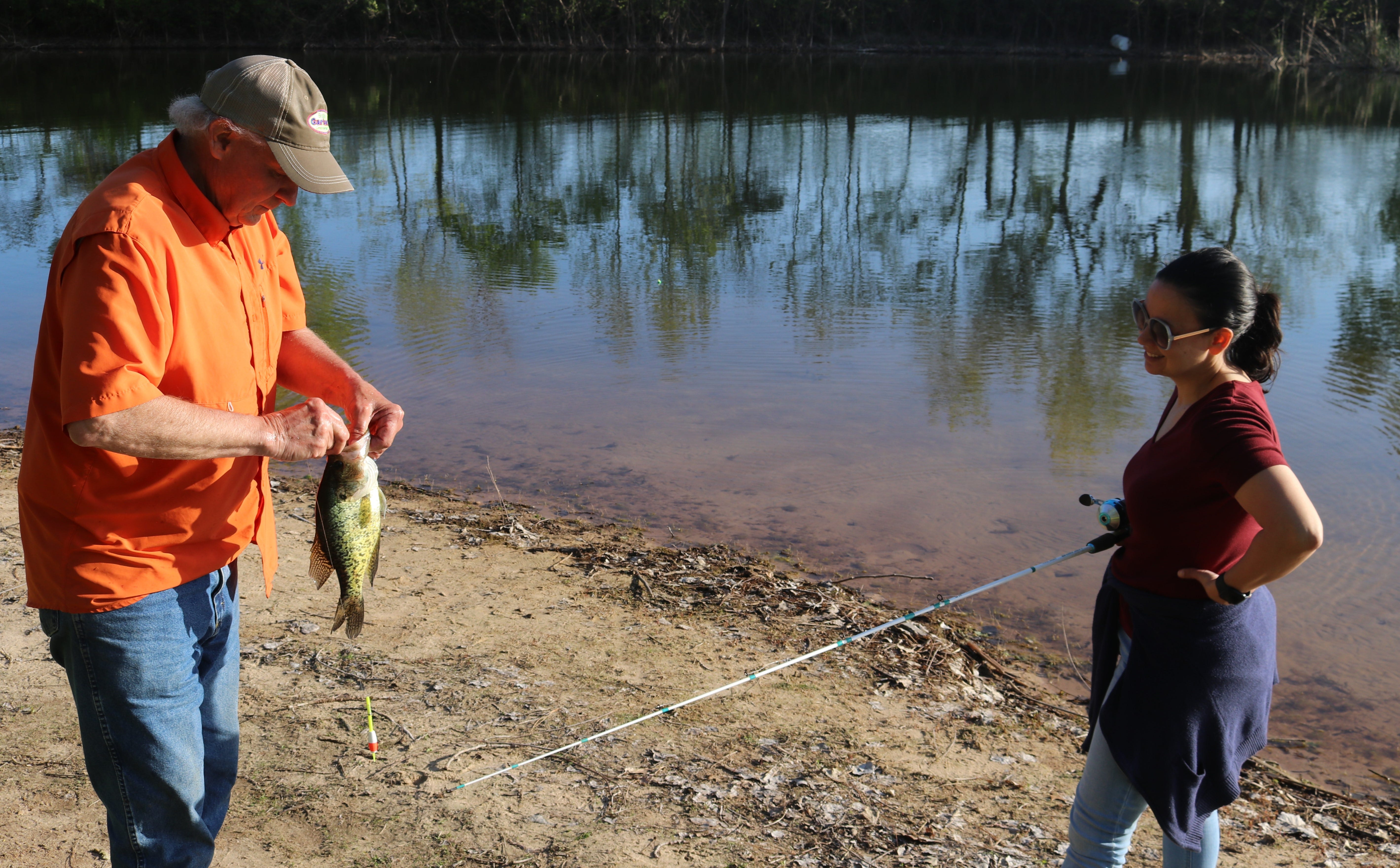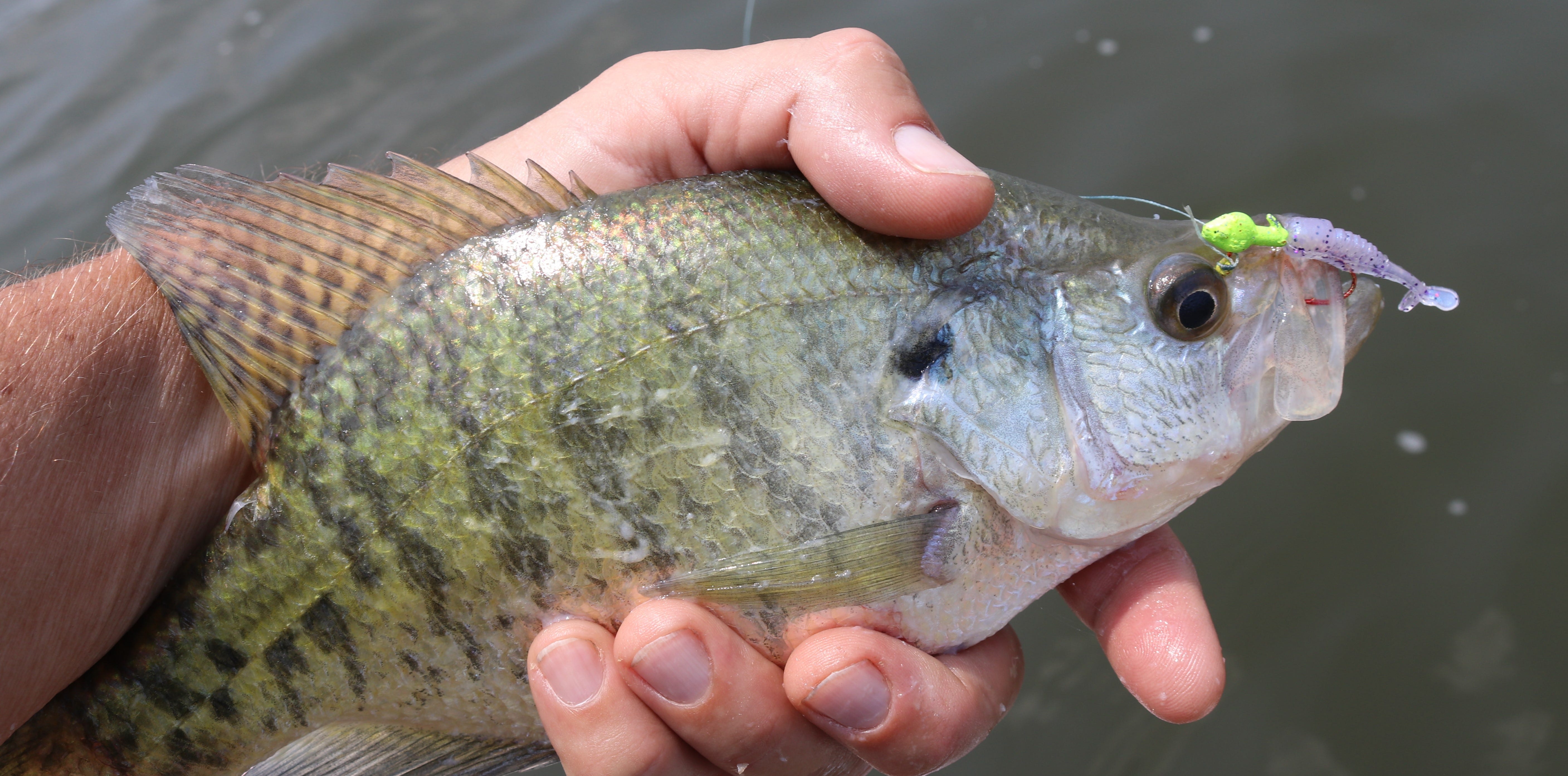- Apr 5, 2024
CRAPPIE FISHING HOW-TO – NEIGHBORHOOD, COMMUNITY & FARM PONDS
Targeting crappie in ponds provides a great opportunity to catch a lot of fish. Here’s a look at how to maximize your pond fishing success.


There’s a joy found in heading out on a fishing excursion to a nearby pond. The odds are usually in your favor. Fish catches tend to be abundant and in quick succession. However, most pond anglers focus on catching bass, catfish and sunfish. In many instances, anglers don’t even realize there are crappie swimming around. They get caught as bycatch more often than specifically targeted. This is great news for you!
Pond crappie are typically aggressive and the perfect size for filling a bucket. Equipment needed is minimal, which is a huge benefit for the after-workers and those with kids.
Pond fishing is a ton of fun for anglers of all experience levels. If you love fishing, pond crappie fishing is a “must add” to your fishing adventures this year.
Here are a few quick tips to put you on the fast track to pond crappie fishing success.
Identify Pond Features


Whether you’re at a pond you’ve fished before or fishing a pond for the first time, it’s important to identify all visible features. This will help you find high-probability areas to find and catch fish when you start casting. Time of year and time of day also play a role.
Look for obvious features first:
- Shoreline – rocky shorelines and dam rocks, often called riprap, warm surrounding water fastest and provide security cover, which attracts baitfish. Crappie will spend a lot of time in these areas because there are dependable food sources year-round and optimal spawning habitat throughout the spring and early summer.
- Points – these are areas of shoreline that jut out into the water create rapid depth change (transition zones). Artificial points (jetties) offer additional features, such as riprap. Crappie like these areas because they offer quick access to both food and safety.
- Trees – submerged, fallen or standing trees and stumps all attract crappie year-round. These areas offer a great combination of food, safety and spawning habitat.
Making plenty of casts in and around these areas will further reveal underwater features as your jig contacts structure and bottom. If a pond has an abundance of crappie, bites will be easy to come by on most days. If crappie account for only a small portion of the predatory species, they will favor transition areas with fallen trees and other woody cover.
While spring and fall will always offer the best chances at a consistent bite day after day, summer and winter should not be overlooked.
Pond water warms and cools much faster than lakes and reservoirs. During the winter this means that crappie will more than likely be within casting distance throughout the warming afternoon hours. Cast toward shaded areas of a pond throughout the summer months.
Determine Depth


Figuring out the depth of different areas of a pond will get you bit more often and hung up less. This is particularly true if you plan to cast and retrieve jigs.
It’s always a safe bet to cast a jig out under a spring pencil float. This allows you to quickly change depth when your float indicates contact with structure or bottom. Crappie tend to bite upward and suspend, which can be difficult to detect. A pencil bobber will fall flat or wobble when a crappie does not aggressively take the bait, signaling you to set the hook.
Depth is also a great determining factor for where crappie are likely to congregate after weather and water conditions have been considered. Channel ledges, drop-offs and heavily structured flats act as feeding buffets for hungry crappie.
These areas of a pond are likely to hold crappie each time you return to fish.
The fact that ponds are small and often shallow means that if you fish a pond enough times, you’re likely to catch crappie anywhere there’s water. Look for recurring hot bite areas and target these areas first, especially when you plan on keeping your catch.
Start Small; Keep it Simple


Small jigs, 2 inches and less, catch crappie most frequently. Baits over 2 inches will attract a lot of attention from bass. This leads to more sporadic crappie catches, but fun fishing, nonetheless.
The Original Baby Shad, Live Roam’R, Hyper Grub and Itty Bit Series are pond catching machines, especially when paired with light line (2-, 4- and 6-pound test) and small jigheads.
When casting, a slow retrieve is best. 1/24-, 1/32- and 1/48-ounce jigheads are the perfect size to keep your jig in the bite zone without getting snagged on vegetation or bottom. 1/16- and 1/8-ounce jigheads are practical for fishing a jig below a bobber or float.
Water clarity and available forage will play the largest roles in determining what color jig to use. In most ponds, crappie will feed primarily on sunfish, minnows, shiners, baby bass, insects and tadpoles.
- Clear Water – Try natural and translucent dual-colored (laminate) jigs with a hint of flash. Purple, brown, silver/gray, blue, green and red represent the most common colors found in clear water forage. The most popular jig colors are Monkey Milk, Purple Monkey, Junebug Pearl Chartreuse, Glacier, Crystal, Blue Ice, Bleeding Shad, Live Minnow, Threadfin Shad, Patriot, Blue Shiner and Pecan Cream.
- Stained Water – Try bright solid and laminate patterns, especially those with chartreuse. The most popular jig colors are Bluegrass, Hummingbird, Fried Shad, Electric Chicken, Green Lantern, Outlaw Special, Cajun Cricket and Bone White/Chartreuse.
- Muddy Water – Try dark solid and laminate patterns. In muddy water, it is important to offer the fish a pronounced silhouette to key in on. The most popular jig colors are Lights Out, Black Gum, Black/Hot Pink, Bayou Booger, Shimmer Shad and Tuxedo Shimmer.
Recommendations:
1/48-ounce Itty Bit Jighead, Itty Bit Swim’R in Outlaw Special
1/32-ounce Overbite Jighead, Hyper Grub in Plum American
1/24-ounce Mo’Glo Jighead, Baby Shad in Bluegrass under a Thill 3/8-inch Spring Pencil Float
Be Respectful & Discreet
Crappie harvest is a vital part of sustaining a viable crappie population long-term in a pond. Crappie directly compete with bass, catfish and sunfish, meaning there’s only so much food to go around in such a small ecosystem. Crappie will quickly become stunted, leaving the vast majority unsuitable for reasonable cleaning purposes, and in turn will negatively impact the growth and reproductive success of other desirable pond species.
While it’s always best practice to treat your catch with respect, this is especially true in neighborhood and park settings. Not everyone will share your passion or knowledge of fisheries management and may unfairly apply negative connotations to your fishing efforts. In rare cases, confrontations can occur.
Fish are best kept and concealed in a five-gallon bucket. Fill the bucket a quarter of the way with pond water and add enough ice to coat the surface. This will allow you to be mobile with your catch while you fish different areas of a pond.
If you plan to clean your catch at the pond, additional discreetness should be exercised. A small cutting board on a tailgate works best with either an electric or manual knife. Position your cleaning station out of view and place the scraps back in the bucket. Dump the bucket where scraps can sink to the bottom out of sight. Turtles and other fish will quickly repurpose the scraps into a meal.
Leave no trace of your catch, harvest or fishing presence. More often than not, this will lead to positive dividends at your favorite pond-hopping spots.



